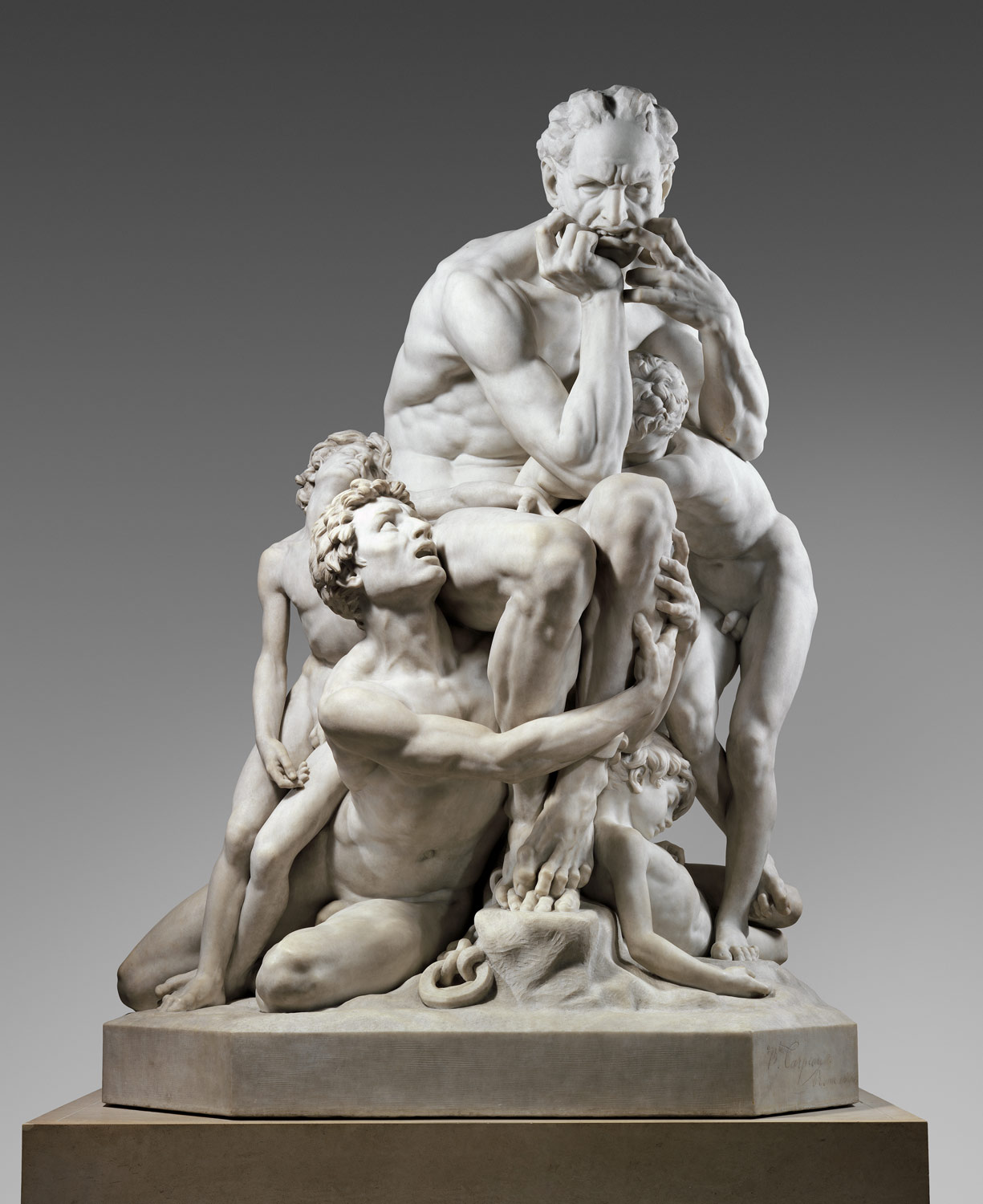Jean Baptiste Carpeaux "Ugolino and His sons"
The character portrayed here is Ugolino and his sons whom appear in Canto 33 of Dante's Inferno. Imprisoned and left to die of starvation Ugolino's sons urge him to eat them so he may live longer:
But when to our somber cell was thrownCarpeaux's composition depicts his admiration of painstaking anatomical accuracy and realism. This work also demonstrates the influence of the High Renaissance Masters, such as Michelangelo and Leonardo. This piece contrasts very highly with a composition of the same scene by Auguste Rodin, whom worked in the realm of sculpting at the same time as Carpeaux.
A slender ray, and each face was lit
I saw in each the aspect of my own,
For very grief both of my hands I bit,
And suddenly from the floor arising they,
Thinking my hunger was the cause of it,
Exclaimed: Father eat thou of us, and stay
Our suffering: thou didst our being dress
In this sad flesh; now strip it all away.
Rodin's composition pushes the boundaries of Academic art towards the future of more modernist movements. Carpeaux however, utilizes a more classical approach. The lack of muscular emphasis and the movement away from standardized emotions in Rodin's piece makes the sculpture more of an experience -- an open ended question if you will. Although it's a step towards the future, I feel that Rodin's sculpture doesn't as accurately capture the gravity of the situation. Using tried and true practices, Carpeaux mimics the sculptures made during the High Renaissance period through a very traditional yet romantic style. Carpeaux's use of standardized emotions and heroically idealized figures more vividly articulate Ugolino's internal conflict. Although he's no Michelangelo, Carpeaux does great justice to the traditional side of sculpture and deserves his place in art history, albeit in the shadow of the High Renaissance Masters.


No comments:
Post a Comment